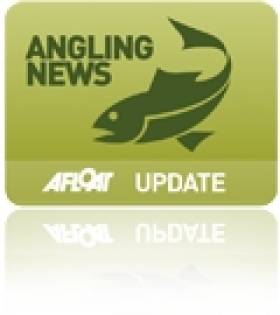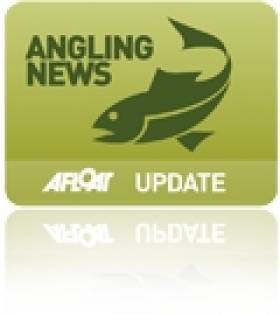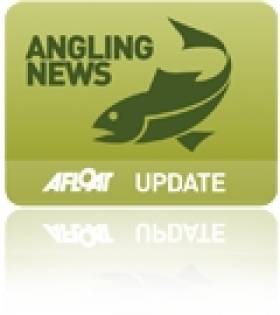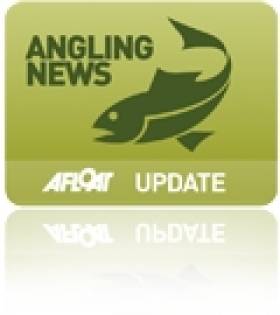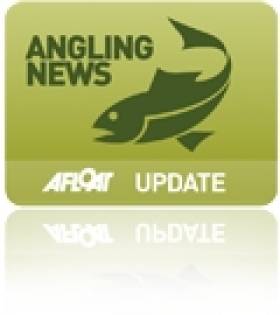Displaying items by tag: Pike
Erne Pike Anglers' Misguided Fury Over Commercial Pike Netting
#Angling - Pike anglers in Fermanagh have taken to social media to campaign against what they call the 'illegal' commercial netting of pike in Lough Erne - but the story isn't all what it seems.
According to The Impartial Reporter, the pike nets men are licensed by Northern Ireland's Department of Culture, Arts and Leisure (DCAL) to catch pike during the open season from 1 December to 28 February annually.
A DCAL spokesperson said the commercial fishery is in place "to manage pike stocks and reduce their impact on trout stocks", a practice that is "in keeping with management practices elsewhere, including in high value large trout lakes in the West of Ireland".
It's reported that only five of seven licensed pike nets men took out the necessary permits to net pike on the Erne system in the most recent season.
But this hasn't stopped some anglers from threatening to break the law and tamper with pike nets in what appears to be misguided anger fuelled by online allegations.
The Impartial Reporter has more on the story HERE.
Survey to Assess Value of Irish Angling
#ANGLING - Inland Fisheries Ireland (IFI) has appointed Tourism Development International (TDI) to undertake a Socio-Economic Survey of Recreational Angling in Ireland.
The overall objective of the survey, which will run over the course of 2012, is to establish the current volume and value of domestic and overseas recreational angling in the country.
Pike, coarse fish, bass, salmon, sea trout, brown trout and sea anglers will all be invited to participate in what is described as Ireland's most comprehensive angling survey undertaken in decades.
The survey will inform IFI and its tourism partners in relation to the business of angling in Ireland and also enable improved strategic planning and decision-making in terms of product development and marketing.
"Anglers are the key to this survey," commented Minister of State for Natural Resources Fergus O'Dowd. "They know the resource and they understand the importance of sustainability. What anglers contribute to Ireland’s economy is unknown but I am certain that it is significant.
"Angling takes place in every river and lake in Ireland and all around our coastline. There is no town or village in Ireland that doesn’t have anglers."
He added: "It is imperative that the inland fisheries and sea angling resources are managed in the best way possible to ensure enjoyment for our local and visiting anglers, sustainable jobs in rural communities and maximising its potential to add to Ireland’s economy.
"Getting the right information from those most involved will greatly assist in improving the angling product."
The survey comprises two parts: a household survey and a survey of recreational anglers which will commence in April. Anglers will be met at fishing locations throughout Ireland and invited to participate there and then, or later by phone or online. IFI says that every effort will be made to accommodate participation.
- angling
- Inland Fisheries Ireland
- IFI
- Tourism Development International
- TDI
- survey
- SocioEconomic Survey of Recreational Angling in Ireland
- Pike
- Salmon
- Sea Trout
- brown trout
- coarse angling
- sea angling
- tourism
- business
- marketing
- development
- Minister of State for Natural Resources
- Fergus O'Dowd
- sustainability
- inland waterways
- jobs
New Angling Guide for Lough O'Flynn and Upper Suck
#INLAND WATERWAYS - Inland Fisheries Ireland (IFI) officially launched the Lough O’Flynn and Upper Suck Angling Guide at the Old Stonehouse Restaurant in Ballinlough recently.
The guide opens to Lough O'Flynn, a 300-acre limestone lake situated 2km from Ballinlough and one of IFI’s many managed lakes requiring a permit.
This lake holds a stock of wild brown trout and is also stocked with brown trout each year which provides an excellent opportunity for all kinds of anglers and those wishing to take up the sport to learn how to fish for trout.
Meanwhile, the centrefold of the guide showcases the Upper Suck catchment from Lough O’Flynn through Co Roscommon and Galway until the Shiven tributary joins, along which good quality coarse, pike and trout angling can be expected.
With breathtaking scenery, this is the perfect place for anglers who can fish almost undisturbed from dawn till dusk.
There are also a considerable number of sections dedicated to anglers with disabilities, such as the Donamon angling stretch which has 30 fishing stands available with individual car parking bays and toilet facilities. This section has proven extremely popular, and IFI says it is committed to ensuring that sections like Donamon continue to open fishing up for everyone.
Amanda Mooney, director at IFI, said: “The guide offers a great source of information on angling hotspots for various types of species, access points and facilities, legislation and safety.
"All in all everything you need for planning a fishing trip. The guide and angling promotion in general supports local businesses and communities in sustaining jobs.”
The Lough O’Flynn and Upper Suck Angling Guide is available from IFI outlets and local permit agents in Ballinlough, Co Roscommon.
Inland Fisheries Ireland also marked the retirement of John Ryan, assistant inspector for Lough O’Flynn and the Suck catchment, after 41 years of service.
Ryan was involved in many areas and aspects of fisheries throughout his career, and was particularly noted for his positive engagement with various groups from angling clubs and development associations to local authorities, businesses and communities.
Third Annual Pike World Cup Set for Lough Ree This April
#ANGLING - The Third International Pike Competition and Pike World Cup Boat Angling Tournament is set to take place on Lough Ree in Co Westmeath from 18-20 April 2012.
While the first event in 2010 attracted 55 anglers, that number more than doubled to 120 in 2012, and many more are expected to take part this year to boost the prize fund to €21,000.
As The Irish Times reports, top prize of €3,000 is guaranteed to the angler with the biggest pike.
This year's entry fee will also be reduced to €100 per angler for all three days or €40 per day. Fees will be returned in prize money with daily and overall prizes.
“We have made changes, especially when it comes to handling and photographing fish,” said organiser Dave Haughton.
For more details about the event and how to take part, contact [email protected].
Carlow Angler Spearheads Coarse Fishing Revival
#ANGLING - Tuesday's Enniscorthy Guardian writes about the revival of coarse fishing in Ireland, spearheaded by Gerry McStraw, chairman of Carlow Coarse Angling Club.
McStraw runs a tackle and bait business in Graiguecullen on the River Barrow, which has made a comeback after years of heavy poaching, and become a safe environment for families to enjoy.
Bream, hybrids, roach, dace and perch are now in abundance in the river - with bag weights of up to 50 lb of roach possible - while the pike pose a worthy challenge for the determined angler.
Carlow Sports Partnership will award a special bursary to the club on Wednesday 30 November in recognition of its work not only in protecting the river but also in youth development.
The Enniscorthy Guardian has more on the story HERE.
Irish Anglers Dominate World Open Pike Classic
Irish anglers showed their dominance at the Waterways Ireland World Open Pike Fishing Classic on the River Erne at Enniskillen recently.
Bothers Eddie and Frankie Roofe from Enniskillen came tops in the boat fly event, claiming the top three spots in the standings with their catches.
In the bank event, which featured a record 103 entrants, Lisburn angler Alan Foye took top prize with a 20lb 6oz monster.
But even that catch was overshadowed on day two of the boat event, when local angler Nick Seddon caught a 25lb 15oz whopper - the biggest fish in the history of the contest.
Seddon claimed first place and a £3,000 prize, followed by Darryl Curry in second and Joe third-place McDermott, both of whom caught fish over 24lb.
The team event was taken by Team Shannon, comprising father-and-son duos Joe and Jason McDermott and Barry and Finian Darby, with a total catch of 112lb.
A turnout of 363 competitors from 17 different countries caught between them a total of 227 pike over the weekend, five of which weighed over 20lb.
Ireland Victorious In 19th Pike International
Ireland celebrated victory over Britain in the 19th International Pike Championships last week in Galway and Roscommon.
The 10-strong Irish squad secured the win after a hard-fought two-day contest on the river Suck, despite traling behind by 23lb in the opening stage in Glinsk.
But Irish team captain Eugene McCabe rallied his side as the competition moved downstream to Ballyforan for day two. The fresh surroundings inspired the Irish to amass a huge catch of 187lb 5oz, whereas the British could only manage 103lb 8oz.
The numbers were more than enough to lift Ireland's total catch clear past their opponents to take the title.
And the weekend was a double victory for the Irish, too, as 25-year-old Jody Kiernan from Meath was declared individual champion for his 21-fish catch of 53lb 10oz.




























